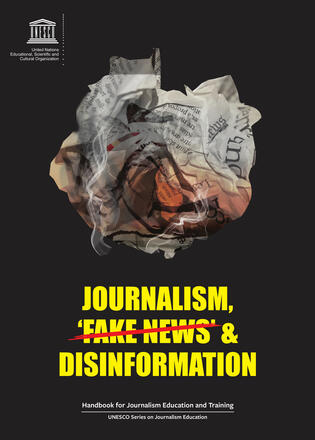
Related contents
A Short Guide to the History of ‘Fake News’ and DisinformationInformation Disorder: The Essential Glossary
Information disorder: Toward an interdisciplinary framework for research and policy making
After a foreword and an introduction, the handbook is organised in seven modules, each including synopsis, outline, module aims, learning outcomes, module format, suggested assignments, readings and, when relevant, materials.
The first module, Truth, trust and journalism: why it matters, is about how journalism can serve society and democracy.
The second module, Thinking about ‘information disorder’: formats of misinformation and disinformation, criticise the expression “fake news”, which is described as an oxymoron in the foreword, because information that is not verifiable and in the public interest does not deserve the label of news.
The handbook instead distinguish:
- Disinformation: deliberate attempts to confuse or manipulate people through delivering dishonest information to them
- Misinformation: misleading information created or disseminated without manipulative or malicious intent
- Mal-information: based on reality, but used to inflict harm on a person, organisation or country rather than to serve the public interest.
Instead of “fake news”, “information disorder” can be used as an umbrella term to include also satire and parody, false connection (e.g. click-bait), misleading content, false context (e.g. a genuine photo claimed to have been taken in a different place or time), imposter content, and manipulated and fabricated content.
Module three, News industry transformation: digital technology, social platforms and the spread of misinformation and disinformation, deals with the collapse of traditional business models, the digital transformation and the emergence of virality.
Module four, Combatting misinformation through Media and Information Literacy, deals with Media and Information Literacy (MIL), which includes news literacy and is increasingly an essential life skill.
Module five, Fact-checking 101, explains that fact-checking can be done before publication (in the newsroom as a part of the editorial process) or ex-post, e.g. on declaration by politicians. The module concentrates on this second meaning, which has grown in the recent years. The module also deals with verification, which is similar to fact-checking, but is done ex ante, mostly on user generated content.
Module six, Social media verification: assessing sources and visual content, helps participants identify and verify the original source of digital information online.
Module seven, Combatting online abuse: when journalists and their sources are targeted, teaches how to recognise and responding to ‘Trolling’ and ‘Astroturfing’, and self-defense from digital safety threats.
Tags: Fake news and disinformation Journalism education Ethics of journalism Fact-checkingThe content of this article can be used according to the terms of Creative Commons: Attribution-NonCommercial 4.0 International (CC BY-NC 4.0) . To do so use the the wording "this article was originally published on the Resource Centre on Media Freedom in Europe" including a direct active link to the original article page.

